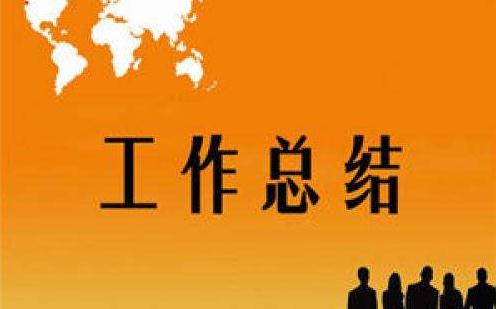【www.zhangdahai.com--慰问信】
【摘要】 青蒿素类药物是治疗疟疾的主要药物,其衍生物有青蒿琥酯、蒿甲醚和二氢青蒿素等,主要的作用机制是通过铁离子介导的细胞损伤。近年来研究发现,青蒿素类药物还具有更广泛的药理作用,它可以通过阻滞细胞周期、诱导细胞凋亡、抗血管生成、调节肿瘤相关基因的表达以及损伤细胞线粒体等机制从而发挥抗肿瘤作用,其抗肿瘤作用日愈受到人们的重视。�
【关键词】 青蒿素衍生物;抗肿瘤;细胞凋亡;基因
青蒿素(artemisinin)是具有过氧化基团结构的倍半菇内醋化合物,主要衍生物有:双氢青蒿素(dihydroartemisinin 、蒿甲醚(artemether)、蒿乙醚(arteether)、青蒿唬醋( artesunate)等。除具有显著抗疟作用外,近年来发现青蒿素类药物还具明显抗肿瘤作用。研究表明青蒿素类药物对肿瘤细胞有明显的杀伤作用而转铁蛋白能够提高青蒿素抗肿瘤作用的选择性[1�3]。口服青蒿素能明显延缓甚至阻止二甲基苯葱诱发鼠乳腺癌。现将其抗肿瘤的可能机制及其特点综述如下。�
1.1 抑制细胞增殖并诱导凋亡 Disbrow等[4]经体外实验证实,二氢青蒿素和青蒿琥酯对HeLa细胞具有较强的毒性作用,其作用机制是通过激活线粒体Caspase途径而诱导细胞凋亡。Dell’Eva等[5]还证实,青蒿琥酯可以诱导Kapo�si’s肉瘤细胞发生凋亡,并呈现出剂量依赖性,但青蒿琥酯并不能诱导正常细胞发生凋亡。董海鹰等[6]用青蒿素处理HeLa细胞后得出,青蒿素可诱导HeLa细胞凋亡,电镜观察细胞出现典型的凋亡小体,细胞凋亡率在一定范围内与药物浓度(20~80μmol/L)呈正相关。董海鹰等[7]还证实,青蒿素可以诱导人红白血病K562细胞跨膜电位下降而发生凋亡。青蒿素类药物诱导细胞凋亡发生的机制还需进一步研究。Li等[7]认为电子传递链中NADH脱氢酶过表达时,线粒体对青蒿素局部产生的自由基高度敏感,使膜除极化导致线粒体功能破坏。Reungpatthanaphong等[8]指出青蒿素、青蒿唬醋、双氢青蒿素可降低细胞线粒体膜电位,从而导致细胞内的ATP显著减少,引发细胞凋亡。�
在探讨青蒿素类药物诱导肿瘤细胞凋亡的分子机制时,美国华盛顿大学Yamachika等[9]也提出青蒿素是通过诱导细胞的凋亡而杀伤肿瘤细胞,他们应用免疫组织化学标记技术显示,经过青蒿素处理的口腔鳞状上皮细胞癌细胞,其Bcl�2呈阴性染色,Bax,p53等呈阳性染色,并认为其诱导的凋亡属p53依赖途径。Disbrow等[10]的结论却有所不同,在对人乳头瘤病毒导致子宫颈癌细胞的研究中,认为青蒿素类药物诱导的凋亡为p53非依赖途径。Efferth[11]提出青蒿琥酯诱导的细胞凋亡可以经p53依赖途径,也可以经p53非依赖途径。�
线粒体跨膜电位的下降、Bcl�2基因的下调与Bax基因上调等参与青蒿素类药物诱导肿瘤细胞亡的作用,不同研究结果提示该诱导凋亡途径可以是p53依赖途径,也可以是p53非依赖途径。�
1.2 镁离子介导的细胞损伤 青蒿素抗疟疾的作用机制是通过铁离子介导形成内过氧化桥,并产生活性氧离子(ROS)和以碳为核心的自由基,后者使细胞发生分子损伤和细胞死亡[12]。恶性肿瘤细胞需要大量的Fe2+作为合成去氧核糖的原料,恶性肿瘤细胞表面存在着大量的铁转运蛋白受体,所以在恶性肿瘤细胞中Fe2+含量要比正常细胞中大得多[13]。如乳腺癌细胞表面的铁转运蛋白受体的数量是正常乳腺细胞的5~15倍[14]。并且铁转运蛋白受体只存在于恶性乳腺肿瘤细胞的表面,在良性乳腺肿瘤细胞并不存在铁转运蛋白受体[15]。恶性乳腺肿瘤细胞摄取铁的量也比正常的乳腺细胞多[13]。Henry等[16]证实,用Fe2+�铁转运蛋白+二氢青蒿素共同治疗人白血病Molt�4细胞可导致细胞的快速死亡。与之相比较,单用其中一种药物效果要差得多;同时用Fe2+�铁转运蛋白+二氢青蒿素对Molt�4细胞的半数抑制量(IC50)只有其对正常淋巴细胞的1/100(2.59和230μmol/L)。Singh等[17]实验证实,铁转运蛋白可以明显增加青蒿素对乳腺癌HTB125细胞的生长抑制作用。同样Efferth等[18]实验发现,在CCRF�CEM和U373细胞中存在着大量的转铁蛋白受体(transferrin receptor,TfR),用青蒿琥酯和青蒿素可以明显抑制细胞的生长,并且设想可以用青蒿琥酯+TfR联合治疗恶性肿瘤。Lai等[19]已经成功地用TfR+青蒿素处理人白血病Molt�4细胞,发现它可以非常有效和有选择性地杀灭肿瘤细胞,对正常细胞几乎无毒性。�
1.3 抗血管生成作用 血管生成的中心环节是血管内皮细胞或基质干细胞发生迁移、分裂和分化,随后形成管腔结构。肿瘤的恶性生长和转移行为明显依赖于血管生成。肿瘤细胞和内皮细胞相互作用,共同调控肿瘤的血管生成。其中,血管内皮细胞生长因子(VEGF)是最重要的血管生成因子,它与血管内皮细胞表面的特异性受体Flt�1和KDR/flk�1结合,促进血管生成。在抗肿瘤药物中,抗血管生成药物有广阔的应用前景。青蒿素及其衍生物被明确证实有抗血管生成作用。在0.5~50 μmol/L浓度范围内,青蒿琥酯浓度依赖性地显著抑制血管发生。青蒿琥酯抑制人卵巢癌HO�8910移植瘤生长,使移植瘤微血管密度减少,并显著降低肿瘤细胞表达VEGF[20]。青蒿琥酯和二氢青蒿素显著抑制人脐静脉内皮细胞(HUVEC)的增殖、迁移以及随后形成管道;青蒿琥酯能够显著抑制鸡胚绒毛膜尿囊膜(CAM)的血管发生;青蒿琥酯能显著抑制内皮细胞表达Flt�1和KDR/flk�1;青蒿琥酯显著抑制人皮肤微血管内皮细胞增殖和分化,诱导其凋亡,并抑制其所致分枝脉管样结构形成,使脉管数量和长度减少[21]。在小鼠胚胎干细胞衍生的胚样物中,青蒿素通过下调缺氧可诱导因子�1α和VEGF的表达,抑制血管生成,而外源的VEGF恢复了毛细管形成[22]。青蒿琥酯下调HUVEC Bcl�2和上调bax水平,引起Bcl�2和Bax的比例变化,明显诱导HUVEC凋亡[23]。6个以上血管发生基因的mRNA表达,与肿瘤细胞对八种青蒿素衍生物的敏感及和耐药性有关[24]。二氢青蒿素在2 μmol/L水平就能明显抑制K562细胞VEGF mRNA表达下调VEGF蛋白水平;二氢青蒿素剂量依赖性地抑制K562细胞来源的培养基刺激CAM血管生成[25]。以上结果表明,青蒿素及其衍生物能够通过抑制VEGF表达、下调Flt�1和KDR/flk�1表达水平,以及下调Bcl�2和上调bax水平,从而抑制内皮细胞增殖、诱导内皮细胞凋亡,发挥抗肿瘤血管生成作用。�
综上所述,青蒿素类药物不仅是有效的抗疟药物,而且具有明显的抗肿瘤作用,其作用机制主要是通过内部的过氧化桥实现的。它还可以通过阻滞细胞周期、诱导肿瘤细胞凋亡、抑制肿瘤新生血管形成、调节肿瘤相关基因的表达以及损伤细胞线粒体等作用机制而实现抗肿瘤作用。用青蒿素类药物治疗肿瘤具有广泛的运用前景,但这还需要进一步的研究探讨。�
参 考 文 献�
[1] Kim SJ, Kim MS, Lee JW, et al. Dihydroartemisinin enhances radiosensitivity of human glioma cells in vitro. J Cancer Res clin Oncol,2006,132(2):129�135.�
[2] Paik IH,Xie S, Shapiro TA, et al. Second generation, orally active antimalarial, artemisinin�derived trioxane dimers with high stability efficacy, and anticancer activity. J Med Chem, 2006,49(9);2731�2734.�
[3] Yamachika E, Hahtr T, Oda D. Ariemisinin:an alternative treatment for oral squamous cell carcinoma. Anticancer Res, 2004, 24(4) ;2153�2160.�
[4] Disbrow G L, Baege A C, Kierpiec K A, et al. Dihydroartemisinin is cytotoxic to papillomavirus�expressing epithelial cells in vitro and in vivo. Cancer Res, 2005, 65(23):10854�10861.�
[5] Dell’Eva R,Pfeffer U,Vene R,et al. Inhibition of angiogenesis in vivo and growth of Kaposi’s sarcoma xenograft tumors by theanti�malarial artesunate.BiochemPharmacol,2004,68(12):2359�2366.�
[6] 董海鹰,王知非,宋维华,等.青蒿素诱导K562细胞凋亡研究.中国肿瘤,2003,12(8):473�475.�
[7] Li W,Mo W, Shen D, et al. Yeast model uncoversdual roles ofmito�chondria in action of artemisinin. PLoS Genet, 2005,1(3):330�334.�
[8] Reungpatthanaphong P, Mankhetkorn S. Modulation of muhidrug resistance by artemisinin, artesunate and dihydroartemisinininK562/adr and GLC4/adr resistant cell lines. Biol PharmBull, 2002,25(12):1555�1561.�
[9] Yamachika E, Habte T,Oda D. Artemisinin:an alternative treatment for oral squamous cell carcinoma,Anticancer res,2004,24(4):2153�2160.�
[10] Disbrow GL, Baege AC,Kierpiec KA,et al. Dihydmartemisinin is cytotoxic to papillomavirus�expressing epithelial cells in vitro and in vivo. Cancer Res,2005,65 (23):10854� 10861.�
[11] Efferth T.Mechanistic perspectives for 1,2,4�trioxanes in anti�cancer therapy. Drug Resist Updat, 2005,8(1�2):85�97.�
[12] van Agtmael M A,Eggelte T A,van Boxtel C J. Artemisinin drugs in the treatment of malaria:from medicinal herb to registered medication. Trends Pharmacol Sci,1999,20(5):199�205.�
[13] Shterman N,Kupfer B,Moroz C. Comparison of transferrin recep�tors,iron content and isoferritin profile in normal and m alignant human breast cell lines. Pathobiology,1991,59(1):19�25.�
[14] Reizenstein P. Iron, free radicals and cancer. Med Oncol Tumor Pharmacother,1991,8(4):229�233.�
[15] Raaf H N,Jacobsen D W,Savon S,et al. Serum transferrin receptor level is not altered in invasive adenocarcinoma of the breast. Am J Clin Pathol,1993,99(3):232�237.�
[16] Henry Lai,Narendra P. Singh Selective cancer cell cytotoxicity from exposure to dihydroartemisinin and holotransferrin. Cancer Letters,1995,1(91):41�46.�
[17] Singh N P,Lai H. Selective toxicity of dihydroartemisinin and holotransferrin toward human breast cancer cells. Life Sci,2001,70(1):49�56.�
[18] Efferth T,Benakis A,Romero M R. Enhancement of cytotoxicity of artemisinins toward cancer cells by ferrous iron. Free Radic Biol Med,2004,7(37):998�1009.�
[19] Lai H,Sasaki T,Messay A,et al. Effects of artemisinin�tagged holo�transferri oncancercells.Life Sci,2005,76(11):1267�1279.�
[20] Chen HH,Zhou HJ,Wu GD,et al. Inhibitory effects of artesunate on angiogenesis and on expressions of vascular endothelial growth factor and VEGF receptor KDR/Flk�1. Pharmacology,2004,71(1):1�9.�
[21] Chen HH,You LL,Li SB. Artesunate reduces chicken chorioall�antoic membrane neovascularisation and exhibits antiangiogenic and apoptotic activity on human microvascular dermal endothelial cell. Cancer Lett,2004,211:163�173.�
[22] Wartenberg M,Wolf S,Budde P,et al. The antimalaria agent artemisinin exerts antiangiogenic effects in mouse embryonic stem cell�derived embryoid bodies . Lab Invest,2003,83 (11):1647�1655.�
[23] Wu GD,Zhou HJ,Wu XH. Apoptosis of human umbilical vein endothelial cells induced by artesunate] .Vasc Pharmacol,2005,41:205�212.�
[24] Anfosso L,Efferth T,Albini A,et al. Microarray expression profiles of angiogenesis�related genes predict tumor cell response to artemisinins . Pharmacogenomics J,2006,6 (4):269�78.�
[25] Lee J,Zhou HJ,Wu XH. Dihydroartemisinin downregulates vascular endothelial growth factor expression and induces apoptosis in chronic myeloid leukemia K562 cells.Cancer Chemother Pharm,2006,57(2):213�220.�





